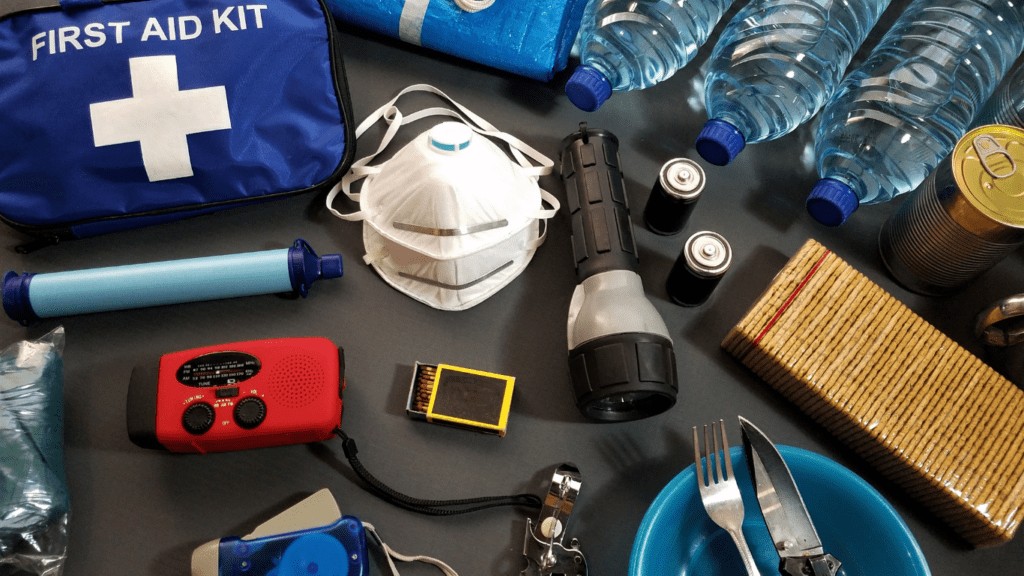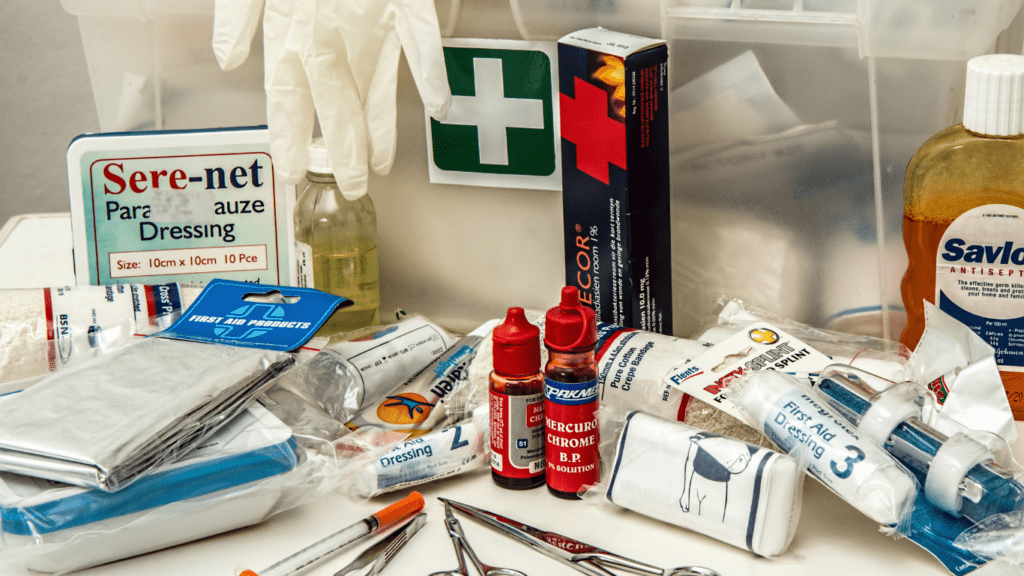Embarking on a backpacking adventure is an exhilarating experience, but ensuring you have the right gear can make or break your trip. As an avid backpacker, I understand the importance of having a well-thought-out gear checklist to navigate the wilderness confidently. From sturdy hiking boots to a reliable water filtration system, each item plays a crucial role in your outdoor escapade.
In this article, I’ll guide you through an essential gear checklist to help you prepare for your next backpacking journey. Whether you’re a seasoned hiker or a novice explorer, having the right gear can enhance your outdoor experience and keep you safe in unpredictable conditions. So, grab your backpack, lace-up your boots, and let’s dive into the must-have gear for your upcoming adventure.
Top Backpacking Gear Essentials Checklist
As an experienced backpacker, I know the importance of having the right gear to make your outdoor adventure safe and enjoyable. Here’s a comprehensive checklist of essential gear that you shouldn’t forget on your next backpacking trip:
Shelter:
- Tent: A lightweight and weather-resistant tent is crucial for a good night’s sleep.
- Sleeping Bag: Choose a sleeping bag that suits the climate of your destination.
- Sleeping Pad: Provides insulation and comfort while sleeping outdoors.
Clothing:
- Moisture-Wicking Base Layers: Keep dry and comfortable by wearing moisture-wicking base layers.
- Insulating Layer: Stay warm with a fleece or down jacket.
- Waterproof Jacket: Be prepared for unexpected weather changes with a waterproof jacket.
Footwear:
- Hiking Boots/Shoes: Supportive footwear is essential for long hikes.
- Socks: Pack extra pairs of moisture-wicking socks to keep your feet dry and blister-free.
Navigation:
- Map and Compass: Always carry a map and compass as a backup to electronic devices.
- GPS or Personal Locator Beacon: Useful for emergencies, especially in remote areas.
Hydration and Nutrition:
- Water Bottle or Hydration System: Stay hydrated on the trail with a reliable water source.
- High-Energy Snacks: Pack lightweight, high-energy snacks for quick fuel during hikes.
Illumination:
- Headlamp or Flashlight: Essential for navigating in the dark or during camping.
First Aid Kit:
- Basic First Aid Supplies: Include bandages, antiseptic wipes, pain relievers, and any personal medications.
Safety Items:
- Multi-Tool: Useful for repairs and various tasks on the trail.
- Whistle: In case of emergencies, a whistle can help you signal for help.
- Emergency Blanket: Lightweight and compact, it provides warmth in emergencies.
- Trekking Poles: Aid in stability and reduce strain on your joints during hikes.
- Duct Tape: A versatile item for quick repairs on gear and equipment.
Being prepared with the right gear is essential for a successful backpacking trip. Make sure to check off each item on this gear checklist before heading into the wilderness.
Backpack
When it comes to backpacking, selecting the right backpack size is crucial for a comfortable and efficient journey. Here’s a guide on choosing the ideal backpack size based on the duration of your adventure:
Daypacks
For short day hikes or trips, opt for a small daypack with a capacity of around 20-30 liters. These are lightweight and perfect for carrying essentials like water, snacks, a first aid kit, and extra layers.
Weekend Trips
If you’re heading out for a weekend getaway, a backpack in the 40-50 liter range should provide ample space for clothing, food, a sleeping bag, and other essentials. Look for features like multiple compartments and adjustable straps for a more customized fit.
Extended Expeditions
Planning a longer trek that spans several days? Consider a backpack with a capacity of 50 liters or more to accommodate additional gear such as a tent, cooking equipment, and extra clothing layers. Look for a pack with ergonomic design and adequate padding for comfort during extended wear.
Shelter
When it comes to shelter while backpacking, having the right gear is crucial for a safe and comfortable journey. One essential item to consider is a high-quality tent that is lightweight yet durable. It’s important to choose a tent that can withstand various weather conditions to keep you protected during your outdoor adventure.
Additionally, a reliable sleeping bag and sleeping pad are key components of your shelter setup. Opt for a sleeping bag that is appropriate for the expected temperatures at your destination and is compact enough to fit in your backpack without taking up too much space. A sleeping pad provides insulation from the ground, enhancing your overall comfort while sleeping outdoors.
Lastly, consider bringing a quality tarp or lightweight hammock as alternative shelter options. A tarp can serve multiple purposes, from providing extra cover over your tent to creating a makeshift shelter in case of unexpected rain. A hammock offers a comfortable and off-the-ground sleeping option, perfect for areas where traditional tent setup may be challenging.
By ensuring you have the right shelter gear, you can rest easy knowing you’re prepared for whatever nature throws your way during your backpacking adventure.
Sleeping Gear
When it comes to sleeping gear for your backpacking adventure, quality and comfort are paramount. A good night’s sleep is essential for your overall outdoor experience, so investing in the right gear is crucial. Here are some key items to consider adding to your backpack:
- Sleeping Bag: A high-quality sleeping bag is a must-have. Look for one that is lightweight, compact, and suitable for the expected temperature range of your trip. Down-filled bags are excellent for warmth, while synthetic bags perform better in wet conditions.
- Sleeping Pad: To cushion your body from the hard ground and insulate you from the cold, a sleeping pad is essential. Choose an inflatable or foam pad that balances comfort, weight, and insulation.
- Tarp or Tent: Protect yourself from the elements with a reliable tent or tarp. Tents provide excellent protection from rain, wind, and insects, while tarps offer lightweight shelter options for minimalist backpackers.
- Hammock: For those who prefer alternative sleeping arrangements, a hammock can be a comfortable and versatile option. Make sure to bring appropriate straps and insulation for colder nights.
- Pillow: While not a necessity, a small inflatable or compressible pillow can greatly enhance your sleeping comfort, especially after a long day of hiking.
- Earplugs and Eye Mask: To block out noise and light disturbances in the wilderness, consider packing earplugs and an eye mask to ensure uninterrupted rest.
By including these essential sleeping gear items in your backpack, you’ll be well-prepared to rest comfortably during your backpacking adventure, allowing you to wake up refreshed and ready to tackle the challenges of the great outdoors.
Clothing and Footwear
When it comes to clothing and footwear for your backpacking adventure, proper layering techniques are essential. Layering can help regulate body temperature, manage moisture, and provide versatility in changing weather conditions.
- Base Layer: Start with a moisture-wicking base layer to keep sweat away from your skin and maintain warmth. Opt for synthetic or merino wool materials for efficient moisture management.
- Insulating Layer: The insulating layer provides warmth by trapping heat close to your body. Consider fleece jackets, puffy vests, or down jackets for lightweight and efficient insulation.
- Outer Shell: The outer shell protects you from wind, rain, and snow. Invest in a waterproof and breathable jacket to stay dry and comfortable during adverse weather conditions.
- Pants and Bottoms: Choose quick-drying, breathable hiking pants or leggings for bottoms. Consider convertible pants for versatility in changing temperatures.
Remember to select clothing and footwear suitable for the terrain and weather forecast to ensure comfort and safety during your backpacking trip.
Cooking and Hydration
When it comes to backpacking adventures, having the right gear for cooking and hydration is essential for sustaining energy levels and staying hydrated throughout the journey. Here’s a comprehensive checklist to ensure you’re well-equipped in this aspect:
Cooking Gear:
- Backpacking Stove: A lightweight and portable backpacking stove is a must-have for cooking meals on the trail. Opt for a reliable stove that suits your cooking needs.
- Fuel: Depending on the type of stove you have, bring along the appropriate fuel such as canister fuel, white gas, or alcohol fuel.
- Cookware: Pack a compact and durable cookware set that includes a pot, pan, utensils, and plates to prepare and enjoy your meals.
- Lighter or Matches: Don’t forget to pack a reliable lighter or waterproof matches for starting your stove.
- Food: Plan your meals ahead and bring lightweight, nutritious, and easy-to-cook food items such as dehydrated meals, trail mix, energy bars, and instant coffee.
- Water Filter or Purification Tablets: Ensure access to clean drinking water by carrying a water filter or purification tablets to treat water from natural sources.
- Water Bottles or Hydration Reservoir: Pack sturdy water bottles or a hydration reservoir to stay hydrated on the go.
- Collapsible Water Container: Consider carrying a collapsible water container for additional water storage at camp.
- Electrolyte Tablets: Replenish essential electrolytes lost through sweating by bringing along electrolyte tablets to maintain hydration levels.
- Hot Drinks: For chilly evenings, bring along packets of hot cocoa, tea, or instant coffee to warm up and stay cozy.
By including these cooking and hydration essentials in your backpacking gear checklist, you’ll be well-prepared to enjoy delicious meals and stay properly hydrated during your outdoor expedition.
Essential Navigation Tools
When it comes to backpacking adventures, having the right navigation tools is crucial for a safe and enjoyable experience. Here are some essential items that I always make sure to include in my gear checklist:
- Compass: A reliable compass is a must-have for any backpacking trip. It helps me orient myself and navigate through unfamiliar terrain with confidence.
- Map: Carrying a detailed map of the area is essential for planning routes, identifying landmarks, and staying on track during the journey.
- GPS Device: In addition to a map and compass, a GPS device can provide real-time location data, track your progress, and help you find your way in case of emergency.
- Whistle: A whistle is a simple yet effective tool for signaling for help if you get lost or encounter any trouble during your backpacking adventure.
- Signal Mirror: A compact signal mirror can be invaluable for attracting attention in case of emergencies by reflecting sunlight to signal for help.
By ensuring you have these essential navigation tools in your backpacking gear arsenal, you can navigate confidently and stay safe on your outdoor expeditions.
First Aid Kit
Ensuring a well-equipped first aid kit is a crucial aspect of backpacking preparedness. Injuries or unforeseen circumstances can occur during outdoor adventures, making it vital to have the necessary supplies on hand to address minor medical issues promptly. When assembling your first aid kit, remember to include essential items such as:
- Adhesive bandages
- Antiseptic wipes
- Gauze pads
- Adhesive tape
- Tweezers
- Scissors
- Pain relievers
- Antihistamines
- Moleskin for blisters
- Thermometer
By including these first aid essentials in your backpacking gear checklist, you can handle minor injuries effectively and ensure a smoother outdoor experience. It’s crucial to personalize your first aid kit based on your medical needs and the duration of your backpacking trip. Remember, a well-prepared backpacker is a safe and confident backpacker.



 Eugenia Phillips plays a pivotal role in the development of Terra Tactician Tactics, bringing her expertise and enthusiasm for the outdoors to the platform. With a strong background in environmental studies and a passion for adventure, Eugenia is dedicated to crafting content that resonates with both novice and seasoned outdoor enthusiasts. She focuses on creating comprehensive guides and articles that offer practical tips, safety advice, and innovative ideas for those looking to explore nature responsibly and confidently. Her attention to detail and commitment to delivering valuable information have made her an invaluable asset to the project.
Eugenia's contributions extend beyond content creation; she is deeply involved in shaping the platform's mission to foster a community of like-minded adventurers. Her collaborative spirit and love for the outdoors drive her to constantly seek new ways to enhance the site's offerings. Whether she is sharing her experiences from a recent hike or conducting research on the latest survival gear, Eugenia's work is infused with a genuine desire to help others enjoy and appreciate the natural world. Her passion for the project is evident in every article she writes, making her a cornerstone of the Terra Tactician Tactics team.
Eugenia Phillips plays a pivotal role in the development of Terra Tactician Tactics, bringing her expertise and enthusiasm for the outdoors to the platform. With a strong background in environmental studies and a passion for adventure, Eugenia is dedicated to crafting content that resonates with both novice and seasoned outdoor enthusiasts. She focuses on creating comprehensive guides and articles that offer practical tips, safety advice, and innovative ideas for those looking to explore nature responsibly and confidently. Her attention to detail and commitment to delivering valuable information have made her an invaluable asset to the project.
Eugenia's contributions extend beyond content creation; she is deeply involved in shaping the platform's mission to foster a community of like-minded adventurers. Her collaborative spirit and love for the outdoors drive her to constantly seek new ways to enhance the site's offerings. Whether she is sharing her experiences from a recent hike or conducting research on the latest survival gear, Eugenia's work is infused with a genuine desire to help others enjoy and appreciate the natural world. Her passion for the project is evident in every article she writes, making her a cornerstone of the Terra Tactician Tactics team.